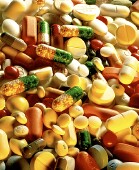
WEDNESDAY, Feb. 18, 2015 (HealthDay News) — Rivers and streams could be major contributors to antibiotic resistance due to the many infection-fighting medications flushed into them, a new study says.
Antibiotic resistance means that commonly used medications don’t work as well — or don’t work at all — in fighting infections.
For this study, British researchers analyzed water and sediment samples from 13 sites in England’s Thames River and the waterways that feed into the river.
“Antibiotic resistance naturally occurs in the environment, but we don’t yet know how human and agricultural waste is affecting its development,” said study co-lead author Elizabeth Wellington, professor at the University of Warwick in England.
“We’ve found that wastewater discharges affect resistance levels, and that improvements in our treatment processes could hold the key to reducing the prevalence of resistant bacteria in the environment,” she said in a university news release.
The study results showed higher levels of antibiotic-resistant bacteria close to certain types of wastewater treatment plants.
Other factors affected the levels of antibiotic-resistant bacteria, including changes in rainfall and land cover. For example, levels were higher after a heavy rainfall in an area surrounded by grassland, but lower after a heavy rainfall in an area surrounded by woodland.
The study was published online recently in The ISME Journal.
Large amounts of antibiotics are released into the environment through human and farm waste, the researchers noted.
More information
The U.S. Centers for Disease Control and Prevention has more about antibiotic resistance.
Copyright © 2025 HealthDay. All rights reserved.

